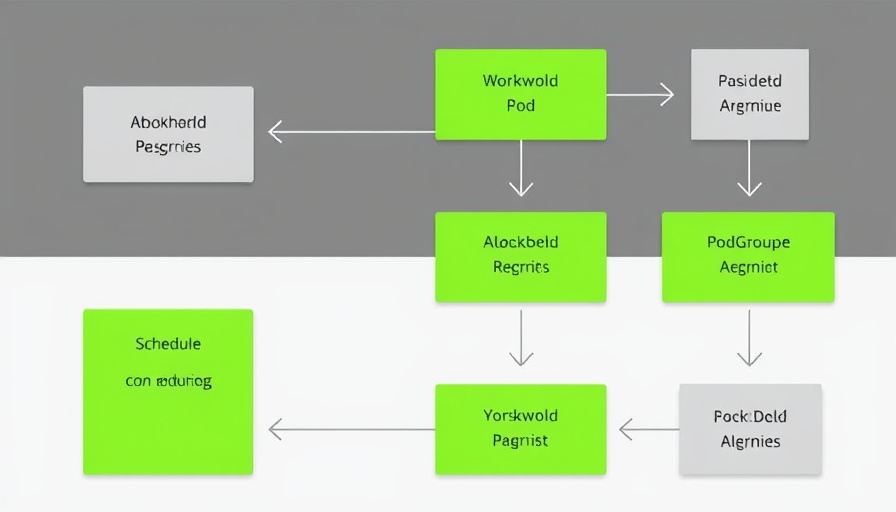
Understanding the Stock Market Landscape Amid Major Events
The stock market recently experienced a rebound, navigating through turbulent waters as it approaches mid-March. Despite the rally, both the Nasdaq and S&P 500 indices remain below significant technical support levels. This marks the fourth consecutive week of declines, signaling an uncertain trading environment.
With regulatory policies and trade information constantly shifting, some stocks are beginning to show signs of strength that could indicate future growth opportunities. Investors are encouraged to carefully curate watchlists featuring stocks that are forming constructive chart patterns. As the market braces for substantial events this coming week, including the Federal Reserve's meeting and Nvidia's AI Conference, the focus will remain on caution and strategic planning.
Fed Meeting: A Maiden Voyage into Uncertain Waters
The Federal Reserve's upcoming two-day meeting will likely dominate the market's attention. Analysts are particularly focused on the signs of a softening job market, which may influence monetary policy. The Fed is expected to issue projections regarding interest rates and economic variables for 2025, allowing investors to gauge the broader economic implications. Currently, there exists a low expectation of rate cuts in May, potentially pushing the timeline further into the summer.
Fed Chair Jerome Powell's recent statements point to a wait-and-see approach, illustrating the central bank's strategic positioning as it awaits more clarity on economic conditions and the political landscape. As retail sales data is set to be published, markets will closely monitor how consumer behavior may align with the Fed's decisions.
Nvidia's AI Conference: A Spotlight on Future Technologies
Adding another layer of intrigue to the market this week is Nvidia's GTC Conference, kicking off on March 17 in San Jose, California. Promoted as the world's foremost AI event, the conference features a multitude of sessions focusing on advancements in artificial intelligence, robotics, and accelerated computing. Notably, CEO Jensen Huang's keynote is anticipated to cover groundbreaking developments, including Nvidia's rumored GB300 AI chip.
The explosion of interest in artificial intelligence, particularly with companies like Nvidia at the forefront, is reshaping various industries. Nvidia's developments may serve not just as technological milestones but also potentially impact stock prices, as investors speculate on the future profitability of AI-driven innovations. This aligns with market sentiments favoring growth stocks with a solid foundation in AI technology.
Investment Insights: Stocks to Watch
In an environment where the stock market faces volatility, it’s crucial to identify resilient stocks. Some firms, such as AngloGold Ashanti, Berkshire Hathaway, and GE Aerospace, show potential. Their performance amid market corrections may signal their long-term viability.
For instance, AngloGold Ashanti has excelled due to rising gold and silver prices, thus falling into a buy zone. Similarly, Warren Buffett's Berkshire Hathaway benefits from a stable cash reserve paired with its diverse portfolio model. Conversely, GE Aerospace’s current positioning reflects an intriguing technical analysis as it tests support levels. Identifying stocks that demonstrate relative strength during market downturns could present advantageous investment opportunities.
Future Predictions: The Path Forward
As we look ahead, stock investors will need to remain vigilant and adaptable. With major shifts on the horizon from the Fed, combined with advancements presented at Nvidia’s conference, there are abundant opportunities for astute investors. The market's reaction in response to these events may pave the way for future trends, presenting either bountiful gains or marked caution.
Keeping abreast of these developments is essential for those invested in sectors driven by technology and innovation. By synthesizing insights gained from key market movements and leading conferences such as Nvidia’s, investors can strategically position themselves to capitalize on growth sectors earmarked for rapid expansion.
Your Strategy Moving Forward
In this dynamic environment, building and updating watchlists will be critical. As new data unfolds from the Fed meeting and the AI conference, adapting investment strategies will allow you to harness potential trends. Monitoring announcements and company performance metrics will provide crucial guidance as the market stability is reassessed.
Investors should seek actionable insights and remain engaged with evolving market strategies to maintain a competitive edge. Keep exploring growth potential while balancing caution in these uncertain times.
 Add Row
Add Row  Add
Add 




 Add Row
Add Row  Add
Add 

Write A Comment